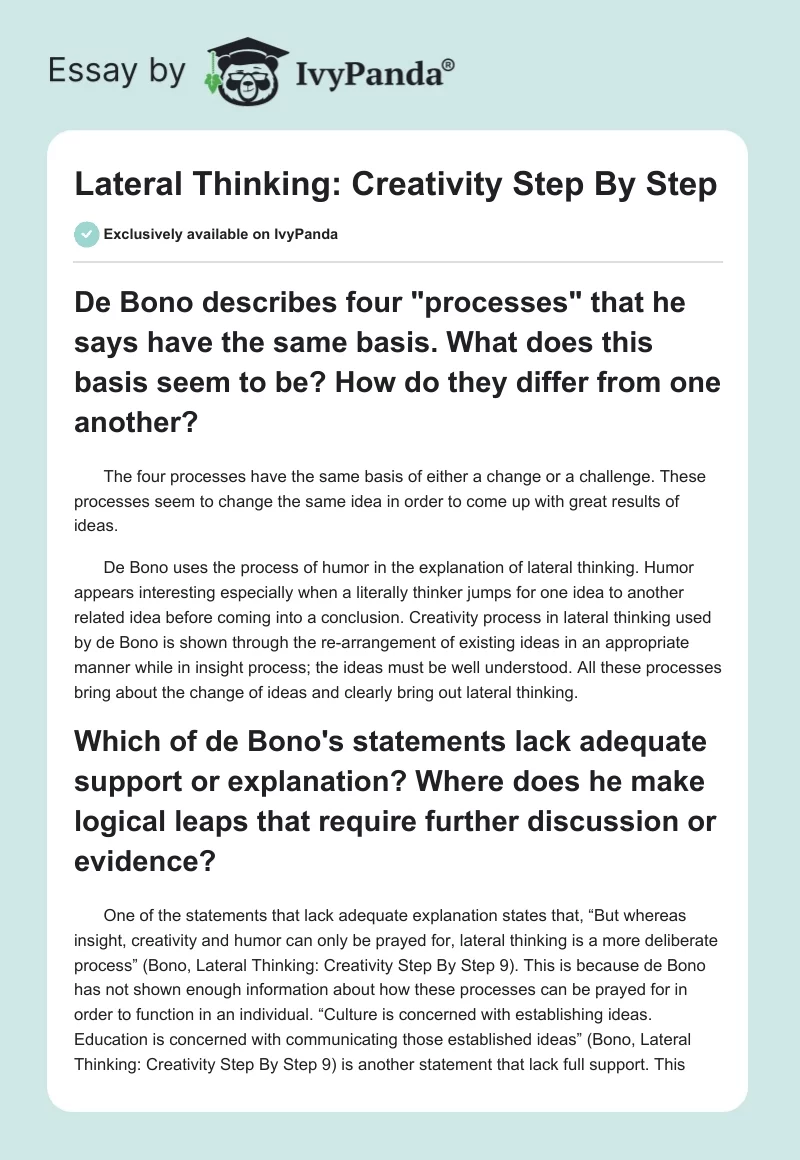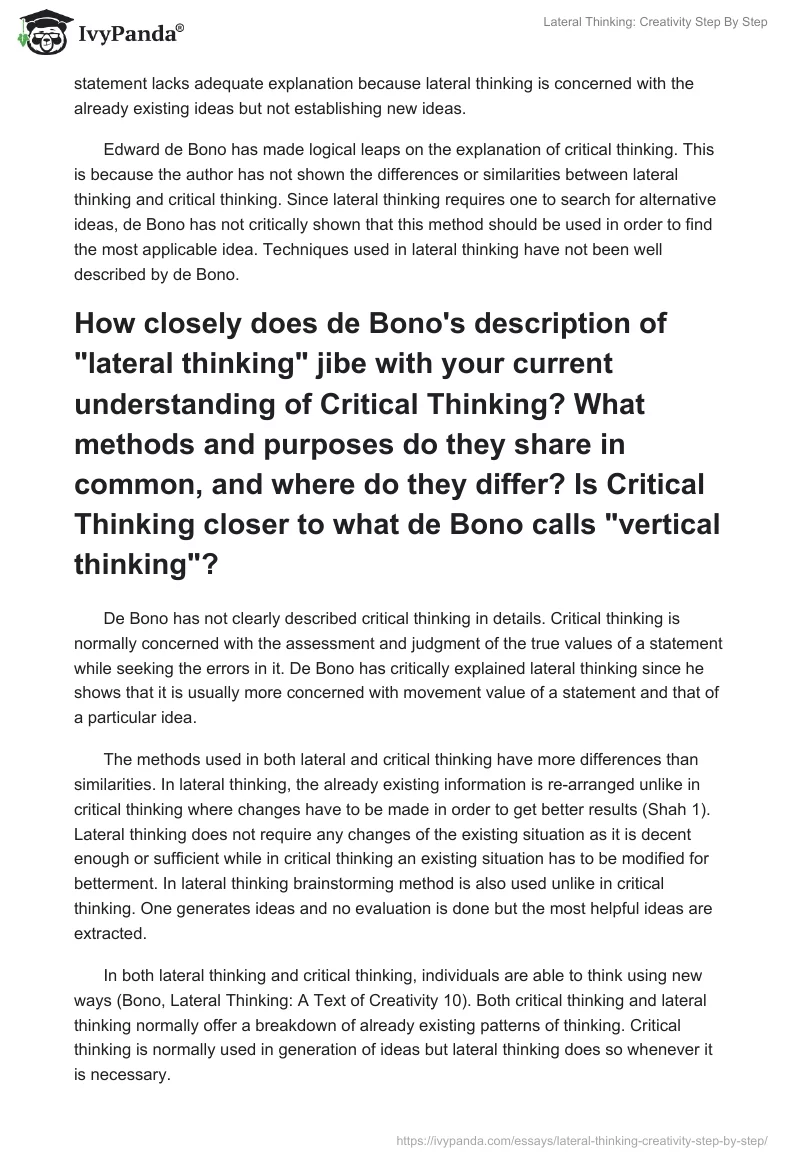De Bono describes four “processes” that he says have the same basis. What does this basis seem to be? How do they differ from one another?
The four processes have the same basis of either a change or a challenge. These processes seem to change the same idea in order to come up with great results of ideas.
De Bono uses the process of humor in the explanation of lateral thinking. Humor appears interesting especially when a literally thinker jumps for one idea to another related idea before coming into a conclusion. Creativity process in lateral thinking used by de Bono is shown through the re-arrangement of existing ideas in an appropriate manner while in insight process; the ideas must be well understood. All these processes bring about the change of ideas and clearly bring out lateral thinking.
Which of de Bono’s statements lack adequate support or explanation? Where does he make logical leaps that require further discussion or evidence?
One of the statements that lack adequate explanation states that, “But whereas insight, creativity and humor can only be prayed for, lateral thinking is a more deliberate process” (Bono, Lateral Thinking: Creativity Step By Step 9). This is because de Bono has not shown enough information about how these processes can be prayed for in order to function in an individual. “Culture is concerned with establishing ideas. Education is concerned with communicating those established ideas” (Bono, Lateral Thinking: Creativity Step By Step 9) is another statement that lack full support. This statement lacks adequate explanation because lateral thinking is concerned with the already existing ideas but not establishing new ideas.
Edward de Bono has made logical leaps on the explanation of critical thinking. This is because the author has not shown the differences or similarities between lateral thinking and critical thinking. Since lateral thinking requires one to search for alternative ideas, de Bono has not critically shown that this method should be used in order to find the most applicable idea. Techniques used in lateral thinking have not been well described by de Bono.
How closely does de Bono’s description of “lateral thinking” jibe with your current understanding of Critical Thinking? What methods and purposes do they share in common, and where do they differ? Is Critical Thinking closer to what de Bono calls “vertical thinking”?
De Bono has not clearly described critical thinking in details. Critical thinking is normally concerned with the assessment and judgment of the true values of a statement while seeking the errors in it. De Bono has critically explained lateral thinking since he shows that it is usually more concerned with movement value of a statement and that of a particular idea.
The methods used in both lateral and critical thinking have more differences than similarities. In lateral thinking, the already existing information is re-arranged unlike in critical thinking where changes have to be made in order to get better results (Shah 1). Lateral thinking does not require any changes of the existing situation as it is decent enough or sufficient while in critical thinking an existing situation has to be modified for betterment. In lateral thinking brainstorming method is also used unlike in critical thinking. One generates ideas and no evaluation is done but the most helpful ideas are extracted.
In both lateral thinking and critical thinking, individuals are able to think using new ways (Bono, Lateral Thinking: A Text of Creativity 10). Both critical thinking and lateral thinking normally offer a breakdown of already existing patterns of thinking. Critical thinking is normally used in generation of ideas but lateral thinking does so whenever it is necessary.
Critical thinking according to de Bono is closer to vertical thinking. Vertical thinking seeks to sequentially come into a conclusion of what has been stated as critical thinking also starts from a particular point , all steps are followed skillfully and thoughtfully and if need be everything is polished and improved until the best value is obtained. In vertical thinking any wrong step is normally avoided and in critical thinking great ideas are used to obtain great results in other words the greatest ideas are normally selected in order to come up with ultimate effects.
Works Cited
Bono, Edward de. Lateral Thinking: A Text of Creativity. New York: Penguin Group, 2009. Print.
Lateral Thinking: Creativity Step By Step. New York: Harper Colophon, 1970. Print.
Shah, Hiren. “Personal Growth- Thinking Out of the Box.” 2011. LifePositive. Web.



